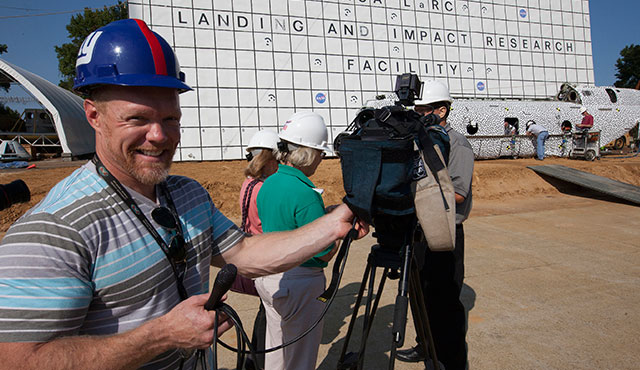A crew of crash test dummies collected data as the CH-46E Sea Knight hit the dirt at about 30 mph. The impact produced noteworthy effects, and may one day help make helicopters more protective of humans.
The NASA Langley Research Center in Hampton, Virginia, recently hosted the second drop test of a Sea Knight fuselage, replacing some metal components in the subfloor with composite materials to test how well the lightweight subfloors of various designs held up.


Just as they did following the first drop in August 2013, engineers will be crunching data for months, including footage captured by 40 cameras operated at various locations and speeds. NASA reported in a news release that there are early indications the recent drop produced a more forceful impact than last year’s effort, creating higher longitudinal loads with less crushing of the subfloor than expected.
The U.S. Navy supplied the retired Marine Corps helicopter along with crash test dummies. The helicopter also carried dummies and other test equipment from the Army, Australia, Germany, and the FAA, which dispatched a side-facing dummy to join the others in a cabin also crowded with cameras, sensors, and other test equipment.
The long term goals include better computer modeling of crash forces that will enable better helicopter designs, with lighter weight and reduced energy consumption.
Meanwhile, the crew appears to be having a good time with those drop tests. NASA posted additional images here.



